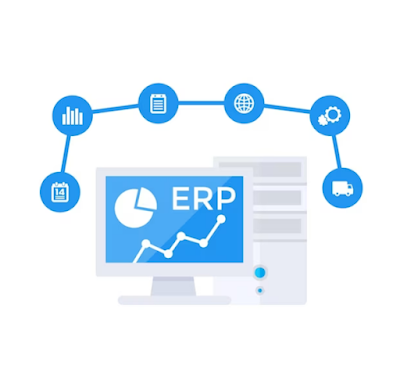How to Ensure a Successful ERP Implementation for Your Business
Enterprise Resource Planning (ERP) systems are powerful tools that can streamline and optimize business processes, from supply chain management to financial reporting. However, implementing an ERP system can be a complex and challenging process. To ensure a successful ERP implementation for your business, there are several key factors to consider. In this blog post, we will explore these factors and provide tips for a smooth ERP implementation.
1. Establish Clear Goals and Objectives The first step in ensuring a successful ERP implementation is to establish clear goals and objectives for the project. What specific business processes are you hoping to improve with the new system? What metrics will you use to measure the success of the implementation? Defining these goals and objectives upfront will help you stay focused throughout the implementation process and ensure that the system meets your business needs.
2. Select the Right ERP System and Vendor Selecting the right ERP system and vendor is critical to the success of the implementation. Consider factors such as the size and complexity of your business, the functionality and features you need, and the vendor’s track record for implementing similar systems. Don’t rush into a decision – take the time to thoroughly evaluate potential vendors and systems to ensure you make the best choice for your business.
3. Plan and Prepare for Implementation Planning and preparation are key to a successful ERP implementation. Develop a detailed project plan that outlines timelines, milestones, and responsibilities. Assign a dedicated project team with representatives from each functional area of the business to ensure that all needs are addressed. Provide adequate training to employees who will be using the system and prepare them for changes in processes and workflows.
4. Manage Change and Communication Implementing an ERP system can cause significant changes to business processes and workflows. It’s essential to manage this change effectively by communicating with employees about the benefits of the new system, providing training, and addressing any concerns or resistance. Be transparent about the implementation process, and involve employees in decision-making wherever possible.
5. Test and Validate the System Before fully launching the new system, it’s important to thoroughly test and validate it to ensure it meets your business needs. Develop test scripts that cover all relevant business processes, and involve end-users in the testing process to ensure that the system is user-friendly and functional. Use this testing period to identify and address any issues or bugs before the system goes live.
6. Monitor and Evaluate Performance Once the ERP system is up and running, it’s important to monitor and evaluate its performance regularly. Develop a set of metrics that can be used to measure the system’s effectiveness and identify areas for improvement. Regularly review these metrics and adjust the system as needed to ensure that it continues to meet your business needs.
In conclusion, implementing an ERP system can be a complex and challenging process, but by following these tips, you can ensure a successful implementation that delivers tangible benefits to your business. Remember to establish clear goals and objectives, select the right system and vendor, plan and prepare thoroughly, manage change and communication effectively, test and validate the system, and monitor and evaluate performance regularly. With the right approach, an ERP system can be a powerful tool for driving business growth and success.
1. Establish Clear Goals and Objectives The first step in ensuring a successful ERP implementation is to establish clear goals and objectives for the project. What specific business processes are you hoping to improve with the new system? What metrics will you use to measure the success of the implementation? Defining these goals and objectives upfront will help you stay focused throughout the implementation process and ensure that the system meets your business needs.
2. Select the Right ERP System and Vendor Selecting the right ERP system and vendor is critical to the success of the implementation. Consider factors such as the size and complexity of your business, the functionality and features you need, and the vendor’s track record for implementing similar systems. Don’t rush into a decision – take the time to thoroughly evaluate potential vendors and systems to ensure you make the best choice for your business.
3. Plan and Prepare for Implementation Planning and preparation are key to a successful ERP implementation. Develop a detailed project plan that outlines timelines, milestones, and responsibilities. Assign a dedicated project team with representatives from each functional area of the business to ensure that all needs are addressed. Provide adequate training to employees who will be using the system and prepare them for changes in processes and workflows.
4. Manage Change and Communication Implementing an ERP system can cause significant changes to business processes and workflows. It’s essential to manage this change effectively by communicating with employees about the benefits of the new system, providing training, and addressing any concerns or resistance. Be transparent about the implementation process, and involve employees in decision-making wherever possible.
5. Test and Validate the System Before fully launching the new system, it’s important to thoroughly test and validate it to ensure it meets your business needs. Develop test scripts that cover all relevant business processes, and involve end-users in the testing process to ensure that the system is user-friendly and functional. Use this testing period to identify and address any issues or bugs before the system goes live.
6. Monitor and Evaluate Performance Once the ERP system is up and running, it’s important to monitor and evaluate its performance regularly. Develop a set of metrics that can be used to measure the system’s effectiveness and identify areas for improvement. Regularly review these metrics and adjust the system as needed to ensure that it continues to meet your business needs.
In conclusion, implementing an ERP system can be a complex and challenging process, but by following these tips, you can ensure a successful implementation that delivers tangible benefits to your business. Remember to establish clear goals and objectives, select the right system and vendor, plan and prepare thoroughly, manage change and communication effectively, test and validate the system, and monitor and evaluate performance regularly. With the right approach, an ERP system can be a powerful tool for driving business growth and success.




Comments
Post a Comment